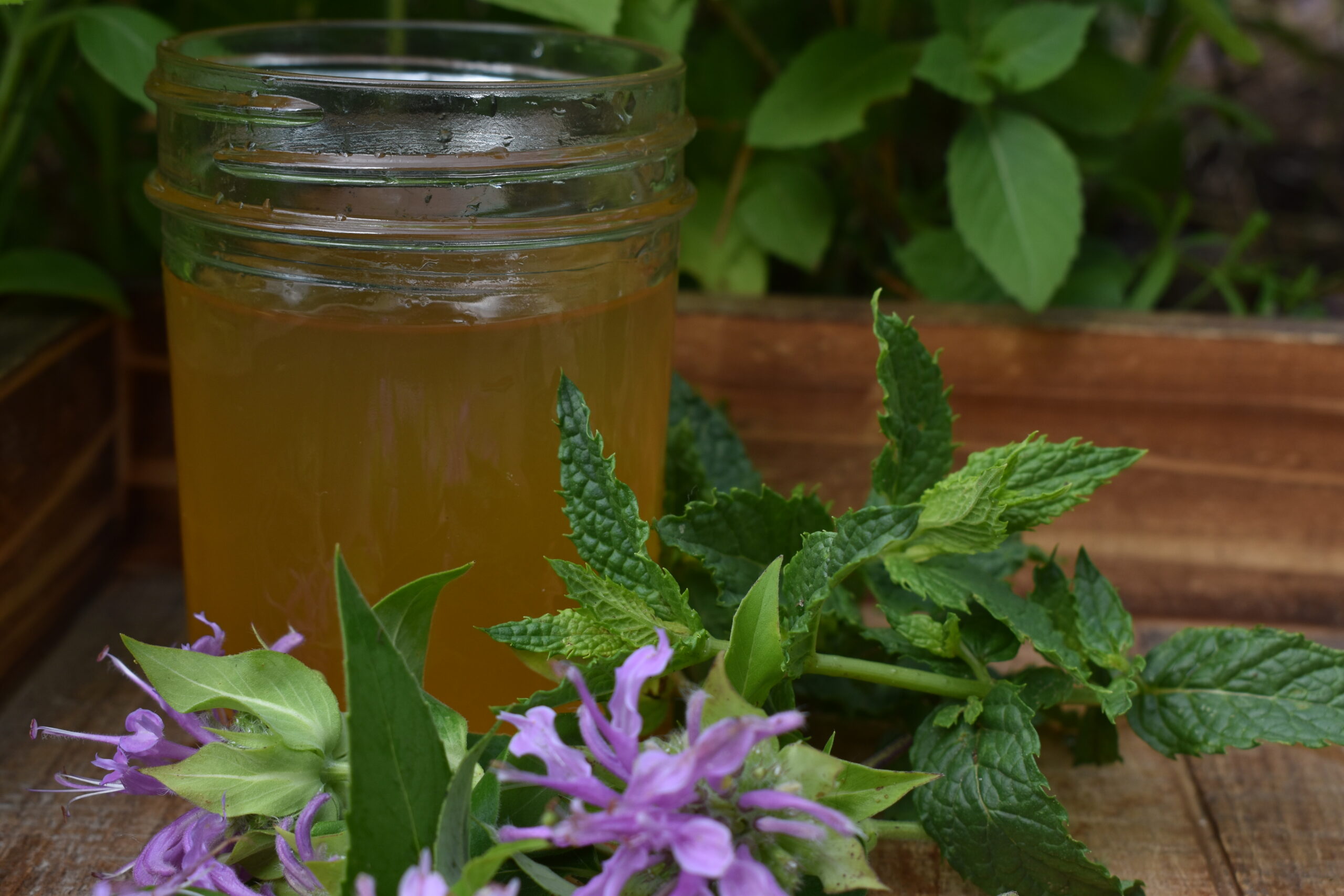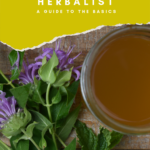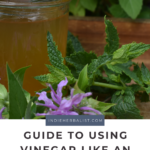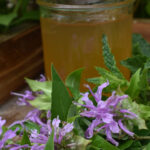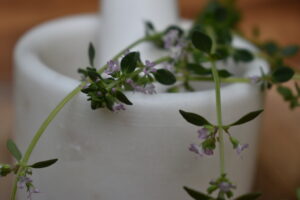Links contained in this post and elsewhere on my website may include affiliate links. When you make a purchase through these links, I earn a commission at no additional cost to you. I only link to products and services that I love - and that I think you will love, too!
Vinegar is a kitchen staple that also deserves a place in the home herbalist’s toolkit. Herbalists use vinegars for making extracts, oxymels, fire cider, and switchel. It’s also a reliable base for liniments, hair rinses, and as part of a skin care routine. Here’s what you need to know to use vinegar like an herbalist.
What is vinegar?
First, where does it come from? Most vinegars start as an alcohol ferment like wine. The transformation happens thanks to a type of bacteria that eats alcohol (ethanol) as its main energy source. Acetic acid is the byproduct from the bacteria. Vinegar is essentially acetic acid+water. You can even make it at home from juice, apple cider or a wide variety of fruit wines.
This ingredient rivals water in its versatility as an herbal solvent. Even though it works differently than alochol, it’s a good alternative if alcohol isn’t available or isn’t desired. Here’s a look at some of the herbal preparations you can make.
Vinegar extracts (aka aceta)
As an extracting medium, vinegar isn’t quite as strong as alcohol. It behaves a little differently when pulling herbal ingredients into solution.
Vinegar is exceptional at extracting certain constituents from plants, mainly the alkaloid class of compounds and minerals, but has a much lower efficiency rate for other parts of a plant’s chemical make-up. This is important knowledge for upgrading your herbal skills. For most instances, using one or the other is a personal preference.
When making extracts, you will use either a weight to volume ratio, or the no-measure/folk method. As with alcohol based extracts, a 1:5 weight of plant material to volume of vinegar is a good ratio for most herbs.
For making a extract with the folk method, add ground or powdered herbs to a glass jar and stir in enough vinegar to cover the herbs with an extra quarter inch or so of liquid. Allow the jar to stand for two weeks, and be sure to shake the jar daily.
The serving size for an aceta extract is usually around same as for an alcohol extract. To use, add the measured amount of extract to a few ounces of water and sweeten with a little honey or juice if the taste is a problem. Vinegar extracts have a shelf life of approximately six months to a year.
Infused vinegars
Infused vinegars use the same process as making a vinegar extract, but the ratio of vinegar to herbs is a little higher so that the end result is less concentrated.
Depending on the ingredients, infusions make great daily tonics or cooking ingredients. Infusions make a good base for skin and hair care products. Liniments for sore muscles, washes for sunburn and skin irritations, facial toner and hair rinses all start with an infused base and a few herbs.
Oxymel
An oxymel is a syrup base. Oxymels date back to ancient Greece, but have experienced a moderate revival with modern herbalists. Equal parts infused vinegar and honey is my standard oxymel recipe. You can use less or more depending on what you like, even as high as 5 parts honey to 1 part vinegar.
To make your own, combine honey and vinegar in a jar. Mix everything together by stirring. Or, if you’re like me, you might put everything in the jar, lid up, and shake. Your oxymel may be a bit foamy for a day or so, but it will settle.
To use an oxymel, enjoy it right off the spoon. Or, mixed it into water as a beverage. Don’t worry, unless dill is involved, oxymels won’t taste like pickle juice. The honey makes oxymels taste deliciously sweet and sour, and they are wonderful thirst quenchers after exercise or hard work outdoors.
The Herbal Academy has a garlic and thyme oxymel recipe (#affiliate) on their blog.
Fire Cider
Of course, any discussion about herbs and vinegar isn’t complete unless you mention herbalist Rosemary Gladstar’s recipe for Fire Cider! This infused vinegar recipe has entered into the modern folklore as a winter wellness staple. Recipes usually feature lots of pungent, spicy herbs like horseradish, garlic, and cayenne with a little citrus, and everyone seems to have their own favorite version.
I have a fire cider recipe over on Teacup Alchemy that uses garlic, ginger, and thai basil!
What types do herbalists use?
The favorite seems to be apple cider vinegar. I’m not sure why, but this type has an almost cult-like following! Perhaps it’s becuase of the relatively mild taste, or the extra probiotics available with some brands. However, it’s not the only option.
I also really enjoy using ones made from rice wine, champagne, or white balsamic. Each variety has a light flavor that mixes well with herbs.
Shelf life of vinegar preparations
Most of the preparations we’ve mentioned today have a short shelf-life. I keep my oxymels, infusions, and fire ciders in the refrigerator and expect them to last around six months. In my experience, aceta extracts made with dried herbs should be shelf stable at room temperature for up to a year.
Especially for extracts, stay away from vinegars with probiotics or “the mother” culture. Although the probiotics are arguably good for you, you want the stability that comes from excluding bacteria in your extracts.
Explore more herbal vinegar
Here are some links to other articles and projects.
